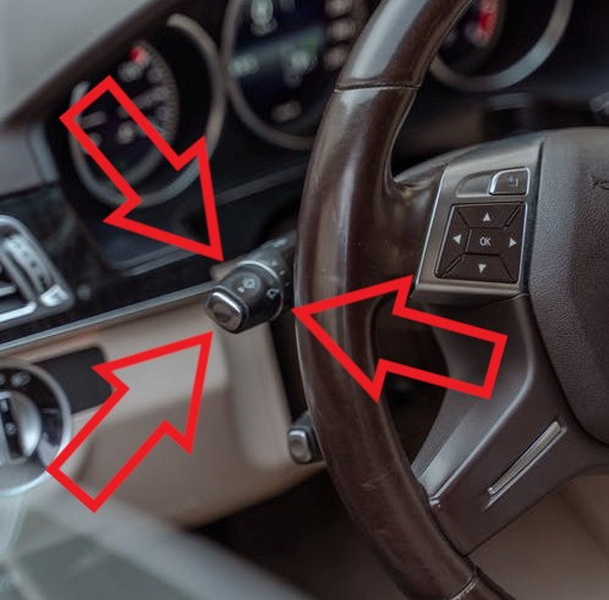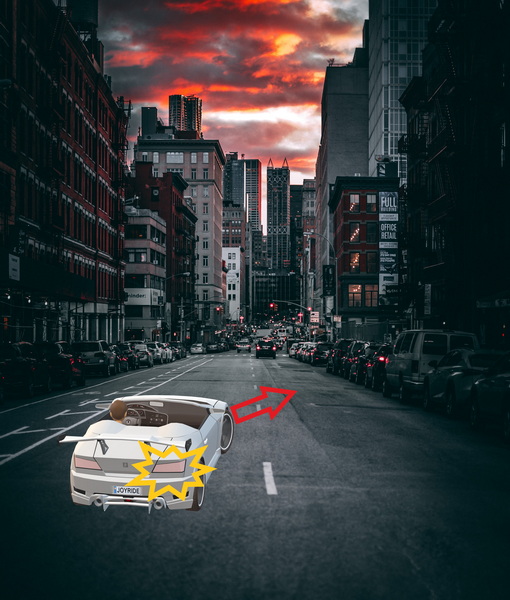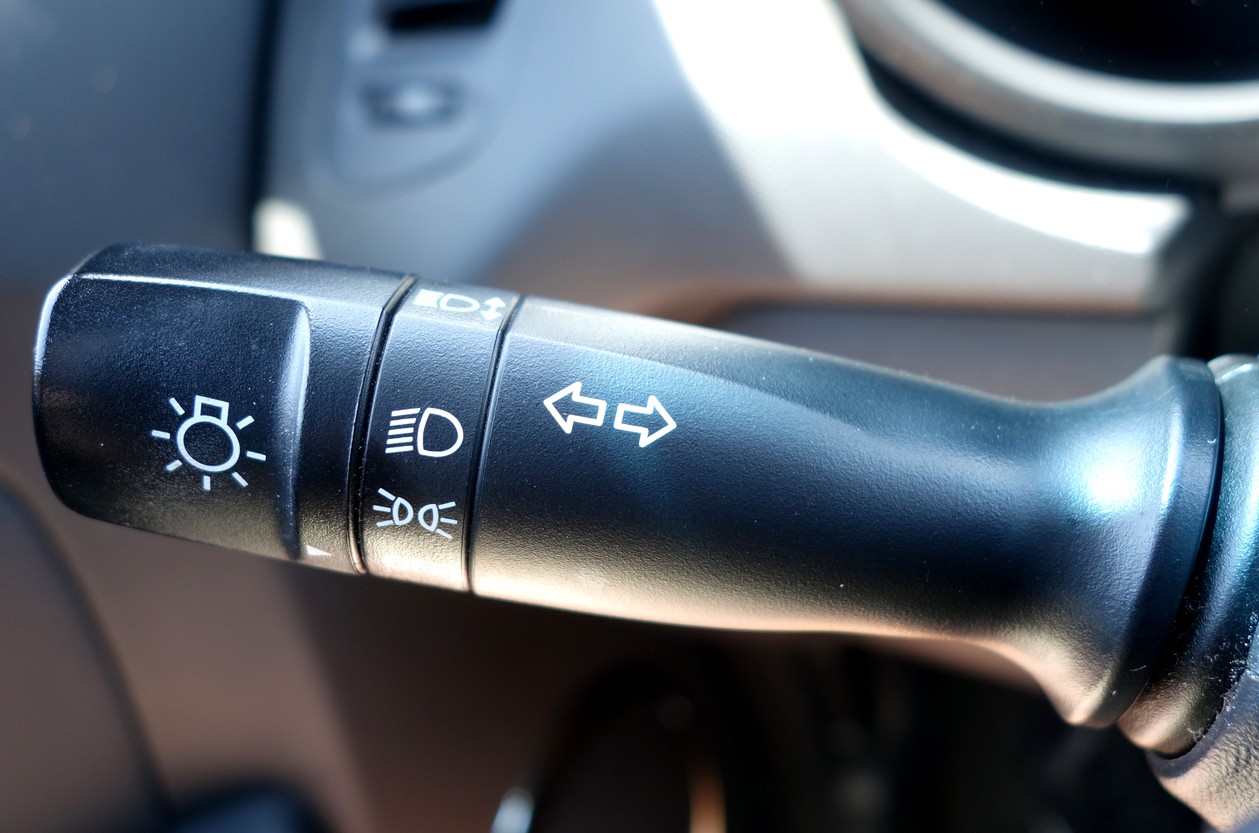What Is a Turn Signal?
Nearly one hundred years after its inception, the blinking automobile turn signal has, incredibly, not fully caught on in Gwangju.
By William Urbanski
All over the world, but notably in Jeollanam-do and Gwangju, there seems to be considerable and ongoing confusion about what a turn signal is and how it is to be used.
In a nutshell, the best way to understand the purpose of a turn signal is by looking at a road, which, as you may or may not have noticed, has lines that are either yellow or white. A common misconception is that these are purely for decoration or aesthetic purposes, but they are, in fact, meant to help drivers safely navigate the roadways. The idea is that when the car is in motion, the driver should try to keep it in between the lines on the road. The area between these lines is called a “lane.” A road can have one, two, or many lanes – I have even seen roads with as many as five lanes! Occasionally, a driver must change between lanes. The myriad reasons for this are unimportant at the present time, but what is very important to understand is that this act of changing lanes presents a challenge from a safety point of view, especially when there are other cars also on the road. In order to “signal” and warn other drivers that an automobile will be moving into a different lane, a driver is supposed to activate blinking lights on the front and back of the vehicle. This system of blinking lights which, unbeknownst to many, all cars are equipped with, is what is colloquially known as a “turn signal.” If the lights on the left of the vehicle are activated, that means the car will move to the left. If the lights on the right side of the vehicle are activated, that means the car will move to the right.
The other important time for a turn signal to be activated is when a driver wishes to make a left or right turn at an intersection (the place where two roads “intersect” at ninety degrees). Many people seem to believe that it is not necessary to use a turn signal at an intersection, but this is simply not the case.

A Brief History of Turn Signals
To further understand the importance of using an automobile’s turn signals, it is instructive to look back into history. Early motorists indicated to other drivers which way they would turn by using arm signals similar to the ones still used by bicycle riders.1 Naturally this was not much fun when it was raining or snowing. Around the year 1920, the “trafficator” was invented, which was a mechanical arm that swung out on either side of the vehicle. Trafficators were seen as an unnecessary luxury by many and not adopted universally. In addition, they were fragile and often got stuck.2 The first blinking turn signals were patented in the 1930s, and by the 1950s, they were widely available on most vehicles, although as options. It was not until 1965 that in America turn signals became mandatory for all cars. Now mandated by virtually all countries, failure to use the turn signal is punishable by fines in addition to being just kind of a jerk thing to do.
How to Operate the Turn Signal on Your Car
In the vast majority of vehicles, the device that controls the left and right turn signals is located behind the steering wheel and to the left. It resembles a thin, plastic stick. To activate the right turn signal (which indicates that your vehicle will be turning right), a driver must gently push the stick up. It will click into place and most likely (but not always!) a little light on the dashboard will start flashing. Do not be alarmed! This simply means the turn signal is working. But what if a driver would like to turn left? In this case, a driver must gently push the stick down. A simple phrase that can help you remember how the turn signal works is “Up is right, down is left.” This aspect of operating a vehicle is a little tricky and not very intuitive, but do not give up. If you practice, you can master it.

If you are entering or exiting a roadway, you need to use your turn signal. If you are changing lanes (that is to say, moving your car from one lane to another while the vehicle is in motion), you need to use your turn signal. If you are making a right or left turn at an intersection, you need to use your turn signal. If your car is making a one hundred and eighty degree turn, there is also an excellent chance you need to use your turn signal.
This is, no doubt, a lot of information to take in at once. So, perhaps the best way to get a clearer understanding of when to use a turn signal is through the Socratic method, informally known as the “question-and-answer approach.”
What if I want to change lanes and there are no other cars around? Do I need to use my turn signal?
Yes. Even if it appears there are no other cars near you, it is possible that a car could be hidden from your view or rapidly approaching in a manner you do not see. For example, there could very well be a car in your “blind spot” (the area around the car that cannot be seen by using the “rear-view mirrors”). For these reasons, please remember to always use your turn signals when changing lanes.
What if I am driving a BMW, Mercedes, Audi, or some other imported and expensive luxury vehicle? Do I need to use my turn signal?
Yes. Regardless of the make and model of your vehicle, you have to use your turn signal whenever you are entering or exiting a roadway, changing lanes, or making a sharp turn. I know that many owners of expensive luxury vehicles (particularly German ones) believe that they are special and that the rules of the road, of society, and of common human decency do not apply to them, but the make and model of a vehicle do not exempt the driver from using the turn signal.
Among luxury car owners (particularly those who own German ones) there is the often-implied but also sometimes outright stated belief that they do not have to be careful drivers because nobody in their right mind would dare collide with their expensive vehicles since it would be so expensive to repair. This misguided belief overlooks the fundamental nature of driving: Collisions can and do happen no matter how much money you had to borrow to buy an overpriced imported vehicle.
I know where I am going perfectly fine, and I think using turn signals is a waste of effort since they do not help me get to my destination any faster. Do I need to use my turn signal?
Yes. This question actually addresses the issue of why it is necessary to use your automobile’s turn signal: It is for the benefit and safety of the other drivers. Even if you know where you are going, the turn signal lets other cars know where you are going, creating safer driving conditions overall.
What if I am passing other cars while barreling through an intersection in downtown Gwangju during rush hour? Do I need to use my turn signal?
First of all, you should never, ever pass another vehicle while traveling through an intersection. This is because an intersection, by definition, is a place where the paths of vehicles intersect, and it is extremely difficult for a driver to approximate the position of all the other cars in that area. In the split second that it takes for you to switch lanes, another car could be pulling into your path because it does not see you, resulting in a collision.
So, even though passing another vehicle in an intersection while speeding through Gwangju during rush hour is an extremely reckless way to operate a vehicle, if you must urinate all over the social contract by doing so, I would say, yes, use your turn signal.
What if my arm is broken, and I cannot properly operate the stick behind my steering wheel that controls the turn signal? Do I need to use my turn signal?
If your arm is broken or just really, really tired and you cannot activate the turn signal properly, it is unsafe to operate a motor vehicle. Please refrain from driving until your arm is healed or fully rested.
What if I am the best driver I know? In fact, I may even be the best driver in the world. Do I need to use my turn signal?
Your driving prowess does not preclude you from the responsibility of using your automobile’s turn signal. Keep in mind that the turn signal increases safety for all drivers using public roads. Also, please remember that if someone T-bones your car on the driver side door, resulting in your car being unceremoniously wrapped around a telephone pole because they had no idea you were changing lanes, you will be just as injured as someone who had a lesser driving ability.
What if I am looking at my smart phone while driving? Do I need to use my turn signal?
Yes. Even if you are watching a really interesting YouTube video on your phone and are worried that in the fraction of a second it takes to activate your turn signal you might miss the best part, you need to activate the turn signal when appropriate.
In Conclusion
As anyone who has driven in Gwangju or Jeollanam-do surely knows, most drivers are completely confused by what a turn signal is and how it is used. Although the amount of technical expertise required to use a turn signal is daunting, I would encourage all drivers to experiment with using it at least once in their lives. You can do it!
Footnotes
1 See https://www.cartalk.com/blogs/jim-motavalli/strange-true-history-turn-signal
2 See http://www.secondchancegarage.com/public/history-of-turn-signal.cfm
The Author
William Urbanski is the managing editor of the Gwangju News and sees a strong correlation between the failure to use turn signals and societal decline. Instagram: @will_il_gatto







